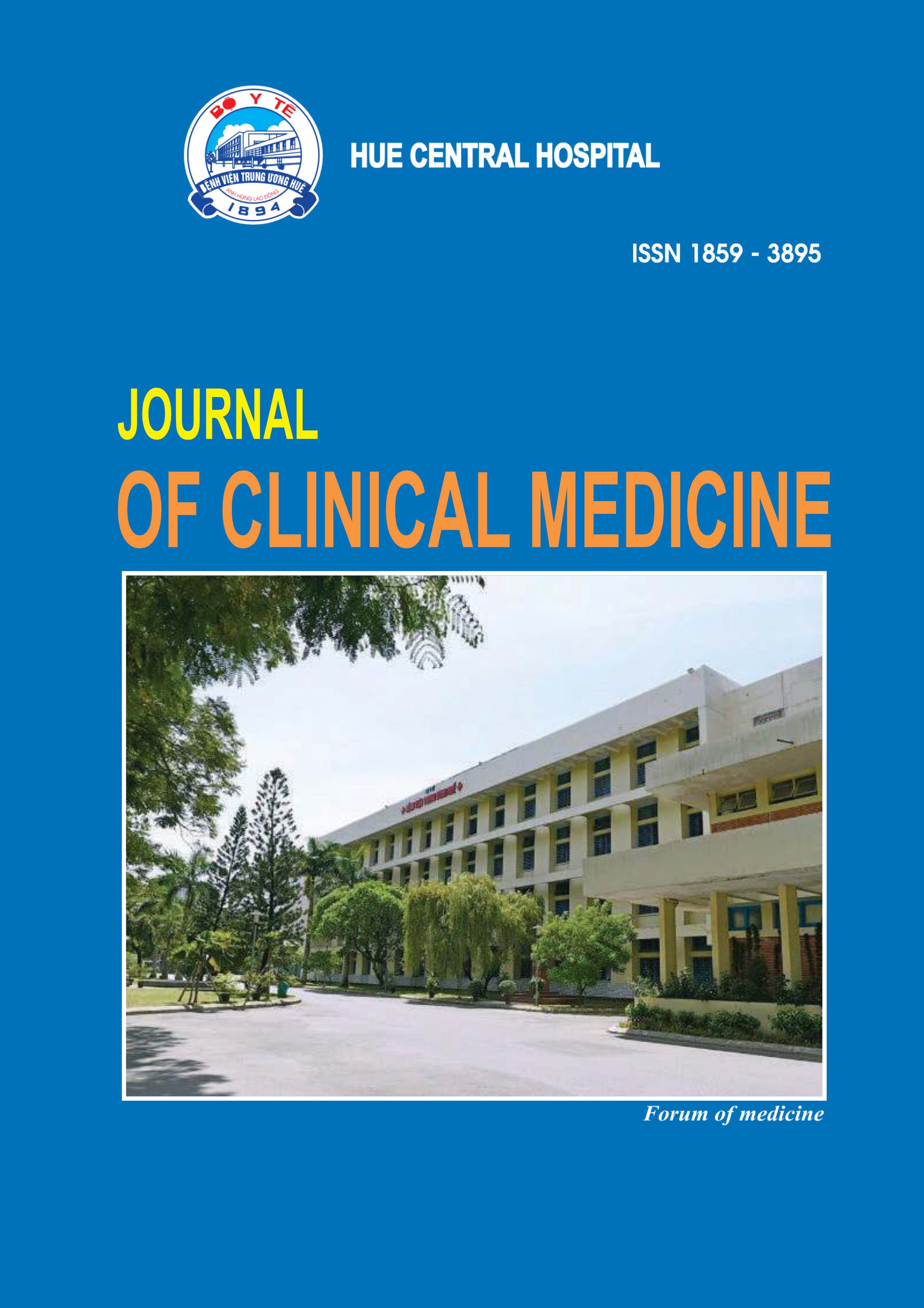Tóm tắt
Background: Acute lymphoblastic leukemia (ALL) is the most common malignant disease in children. Mininal residual disease (MRD) levels after induction phase predict outcome and may select patients for therapy intensification.
Objective: To analyse clinical presentations, laboratory features, especially the result of minimal levels in childhood acute lymphoblastic leukemia patients
Methods: It was a prospective study on chilhood acute lymphoblastic leukemia patients who admitted hospital since April, 2018 to May, 2020.
Results: There were 38 new patients, in which, 68.4% patients with standard risk, and 31.6% patients with high risk; the ratio of male to female was 2.16:1. The median age was 4.0 years (range: 0.66 to 15). The percentage of B-ALL, T-ALL and combined B and T- ALL were 81.6%, 15.8% and 2.6% respectively. The most common symptoms were anemia (86.8%), fever (76.3%), hepatomegaly (68.4%), splenomegaly (60.5%), enlarged lymph nodes (55.3%). For laboratory features, 26.4% patients had white blood cell (WBC) ≥ 50x109/l, 76.3% patients had platelet (PLT) < 100x109/l, 84.6% patients had blood hemoglobin level (Hb) < 10 g/dl. Lactate dehydrogenase (LDH) and C- reative protein (CRP) increased in most of patients, accounted for 89.5% and 73.7% respectively. After induction, complete remission which based on less than 5% blasts achieved 97.4%. However, MRD after induction phase with threshold ≤ 0.01% accounted for 78.9%. And based on MRD, we adjusted intensive chemotherapy for 4 patients.
Conclusion: The most common clinical presentation was anemia, fever, hepatosplenomegaly, bone pain, bleeding. The result of MRD levels is more sensitive and precise to evaluate the responde after induction phase. Therefore, we could adjust intensitive therapy for some patients with high MRD levels to improve the treatment outcome.
Tài liệu tham khảo
Fadoo Z, Nisar I, Yousuf F, Lakhani LS, Ashraf S, Imam U, et al. Clinical features and induction outcome of childhood acute lymphoblastic leukemia in a lower/middle income population: A multi-institutional report from Pakistan. Pediatr Blood Cancer 2015;62:1700-8
Uckun FM, Gaynon PS, Sensel MG, Nachman J, Trigg ME, Steinherz PG, et al. Clinical features and treatment outcome of childhood T-lineage acute lymphoblastic leukemia according to the apparent maturational stage of T-lineage leukemic blasts: a Children’s Cancer Group study. J Clin Oncol 1997;15:2214-21
Gaynon PS, Desai AA, Bostrom BC, Hutchinson RJ, Lange BJ, Nachman JB, et al. Early response to therapy and outcome in childhood acute lymphoblastic leukemia: a review. Cancer 1997;80:1717-26
Ravindranath Y. Biology of childhood acute lymphoblastic leukemia (ALL) in low/middle-income countries--A case for using age at diagnosis for defining low-risk all. Pediatr Blood Cancer 2015;62:1687-8
Howard SC, Pedrosa M, Lins M, Pedrosa A, Pui CH, Ribeiro RC, et al. Establishment of a pediatric oncology program and outcomes of childhood acute lymphoblastic leukemia in a resource-poor area. JAMA 2004;291:2471-5
Al-Sudairy R, Al-Nasser A, Alsultan A, Al Ahmari A, Abosoudah I, Al-Hayek R, et al. Clinical characteristics and treatment outcome of childhood acute lymphoblastic leukemia in Saudi Arabia: a multi-institutional retrospective national collaborative study. Pediatr Blood Cancer 2014;61:74-80
Yasmeen N, Ashraf S. Childhood acute lymphoblastic leukaemia; epidemiology and clinicopathological features. J Pak Med Assoc 2009;59:150-3
Greaves MF, Colman SM, Beard ME, Bradstock K, Cabrera ME, Chen PM, et al. Geographical distribution of acute lymphoblastic leukaemia subtypes: second report of the collaborative group study. Leukemia 1993;7:27-34
Campana D, Pui CH. Detection of minimal residual disease in acute leukemia: methodologic advances and clinical significance. Blood 1995;85:1416-34
Vora A, Goulden N, Mitchell C, Hancock J, Hough R, Rowntree C, et al. Augmented post-remission therapy for a minimal residual disease-defined high-risk subgroup of children and young people with clinical standard-risk and intermediate-risk acute lymphoblastic leukaemia (UKALL 2003): a randomised controlled trial. Lancet Oncol 2014;15:809-18
Yeoh AE, Ariffin H, Chai EL, Kwok CS, Chan YH, Ponnudurai K, et al. Minimal residual disease-guided treatment deintensification for children with acute lymphoblastic leukemia: results from the Malaysia-Singapore acute lymphoblastic leukemia 2003 study. J Clin Oncol 2012;30:2384-92
| Đã xuất bản | 03-03-2025 | |
| Toàn văn |
|
|
| Ngôn ngữ |
|
|
| Số tạp chí | Số 64 (2020) | |
| Phân mục | Nghiên cứu | |
| DOI | 10.38103/jcmhch.2020.64.3 | |
| Từ khóa | Acute lymphoblastic leukemia, Mininal residual disease |

công trình này được cấp phép theo Creative Commons Attribution-phi thương mại-NoDerivatives 4.0 License International .
Bản quyền (c) 2020 Tạp chí Y học lâm sàng Bệnh viện Trung Ương Huế

